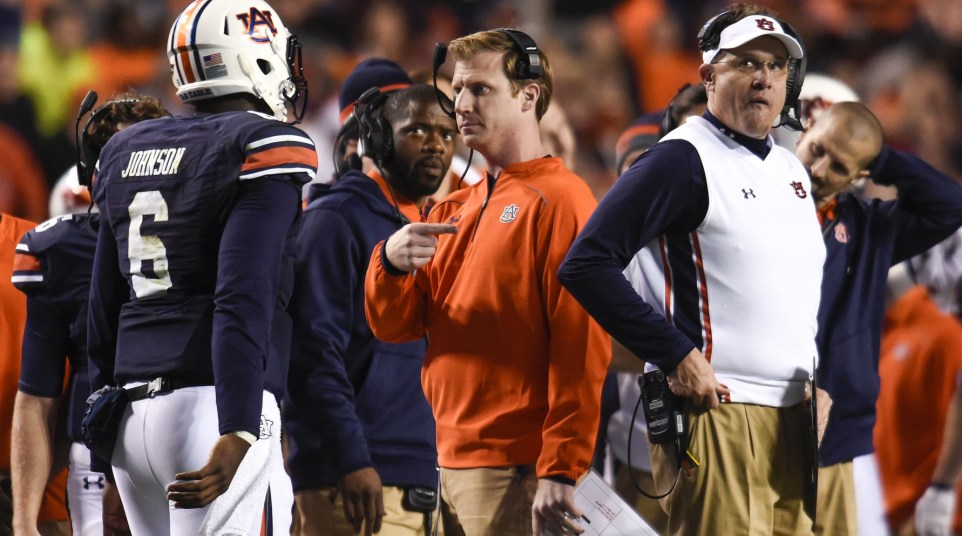
Has the rest of the SEC caught up with Gus Malzahn's hurry-up offense?
Gus Malzahn’s offense took the SEC by storm. Now, it’s spinning its wheels in the mud.
As offensive coordinator at Auburn, his innovative “hurry-up” offense led by Cam Newton sparked the Tigers to the 2010 national title. Malzahn, a high school coach only five years before, won the Broyles Award as the nation’s top assistant coach.
In 2013, his first year back at Auburn as head coach, Malzahn transformed a last-place team into an SEC champion and a berth in the national championship game.
It’s been all downhill since. The Tigers were 8-5 in 2014 and sit 6-6 this season as they await their pairing in a lower-tier bowl game.
Has the SEC caught up with Malzahn’s hurry up? Or has Auburn failed to recruit capable successors to Newton and Nick Marshall?
Probably, a little bit of both.
This season’s Auburn quarterbacks, Jeremy Johnson and Sean White, are a significant drop-off from Marshall, though the Tigers stumbled to 8-5 last season with Marshall. Neither has skills to rival those of Newton and Marshall in running the read-option and making big plays.
With the problems at quarterback this season, Malzahn slowed the tempo. That hasn’t worked, either.
The reduction in offensive production has been significant. In 2010 with Newton, the Tigers averaged 41.2 points and 499 yards per game. In 2013 with Marshall, the Tigers averaged 39.5 points and 501 yards per game.
This season, the Tigers are averaging 27.2 points and 367 yards per game.
There’s a good chance Auburn will try another quarterback next season in an attempt to revive Malzahn’s balanced, high-octane attack.
High school recruit Woody Barrett, a four-star prospect from Florida, and junior-college transfer John Franklin III, who began his career at Florida State, are the type of dual-threat quarterbacks who have thrived in Malzahn’s system.
Malzahn’s speedy offense needs a quarterback capable of making quick reads with an ability to run and pass. Johnson has been a huge disappointment.
Auburn’s problems aren’t just at quarterback. The Tigers’ offensive line and receiver corps hasn’t been as good as expected. The Tigers have elite talent, but the execution has been lacking.
Ironically, the popularity of hurry-up offenses has helped defenses stop it. Defensive coaches are making adjustments, allowing their units to make quicker personnel and alignment changes.
When teams adopt the no-huddle offense, their defense practices against it and becomes more familiar with defending against it. And more and more opponents are running the no-huddle, adding to its familiarity.
So Auburn opponents are better prepared for the Tigers’ speed in running plays. They’ve gotten used to making speedy substitutions to adapt to what they see when the Tigers rush to the line of scrimmage.
